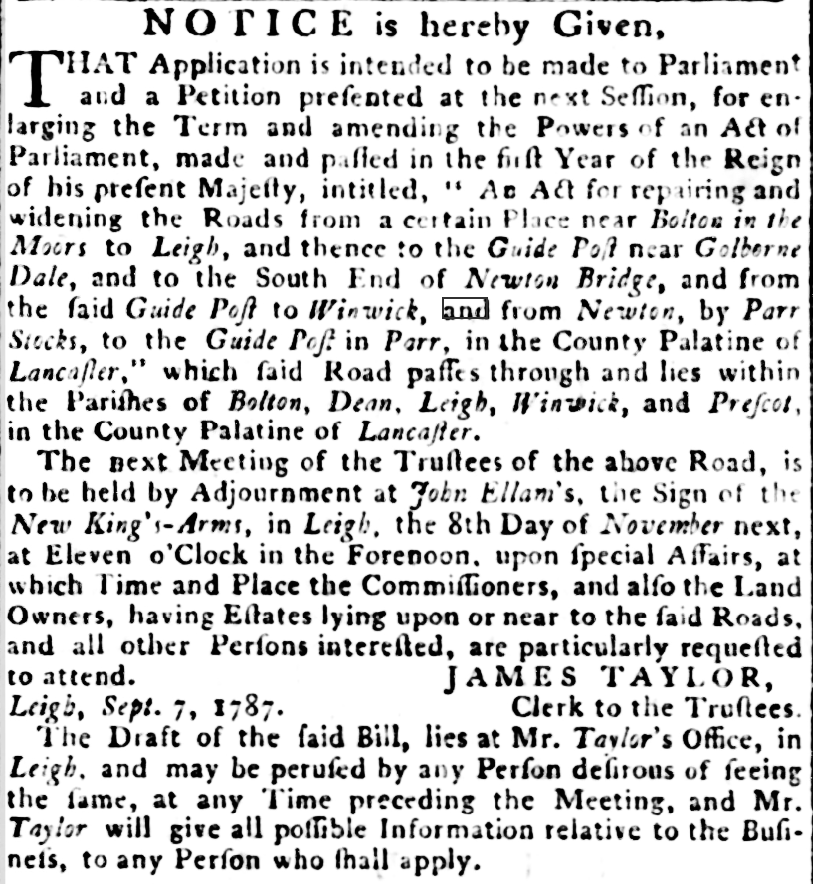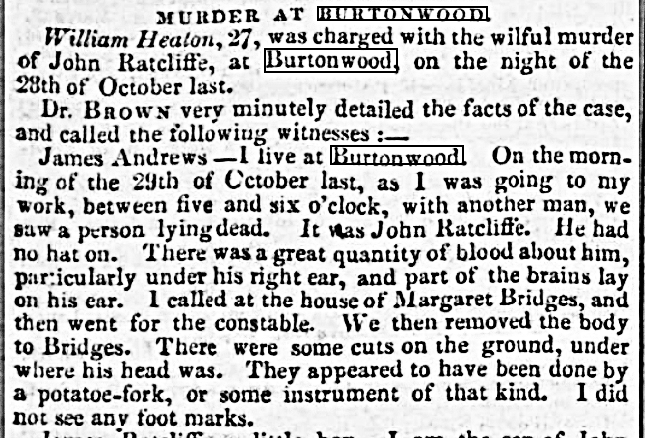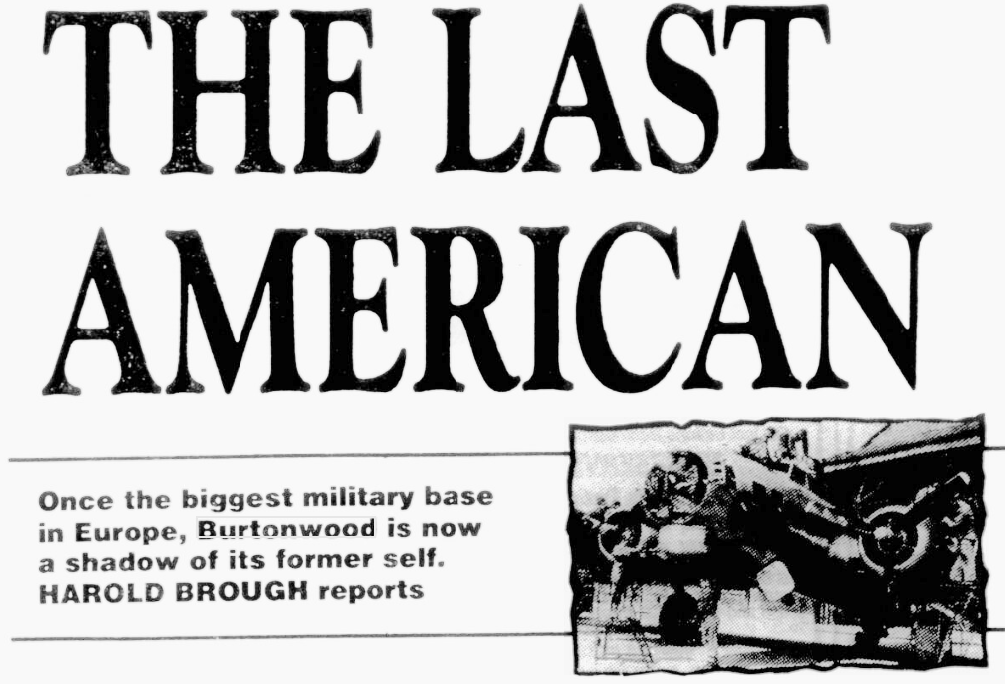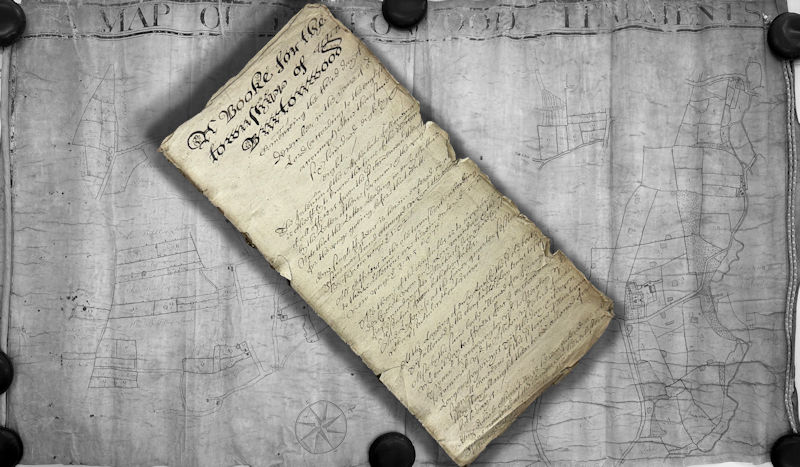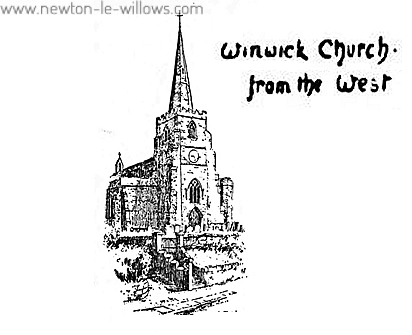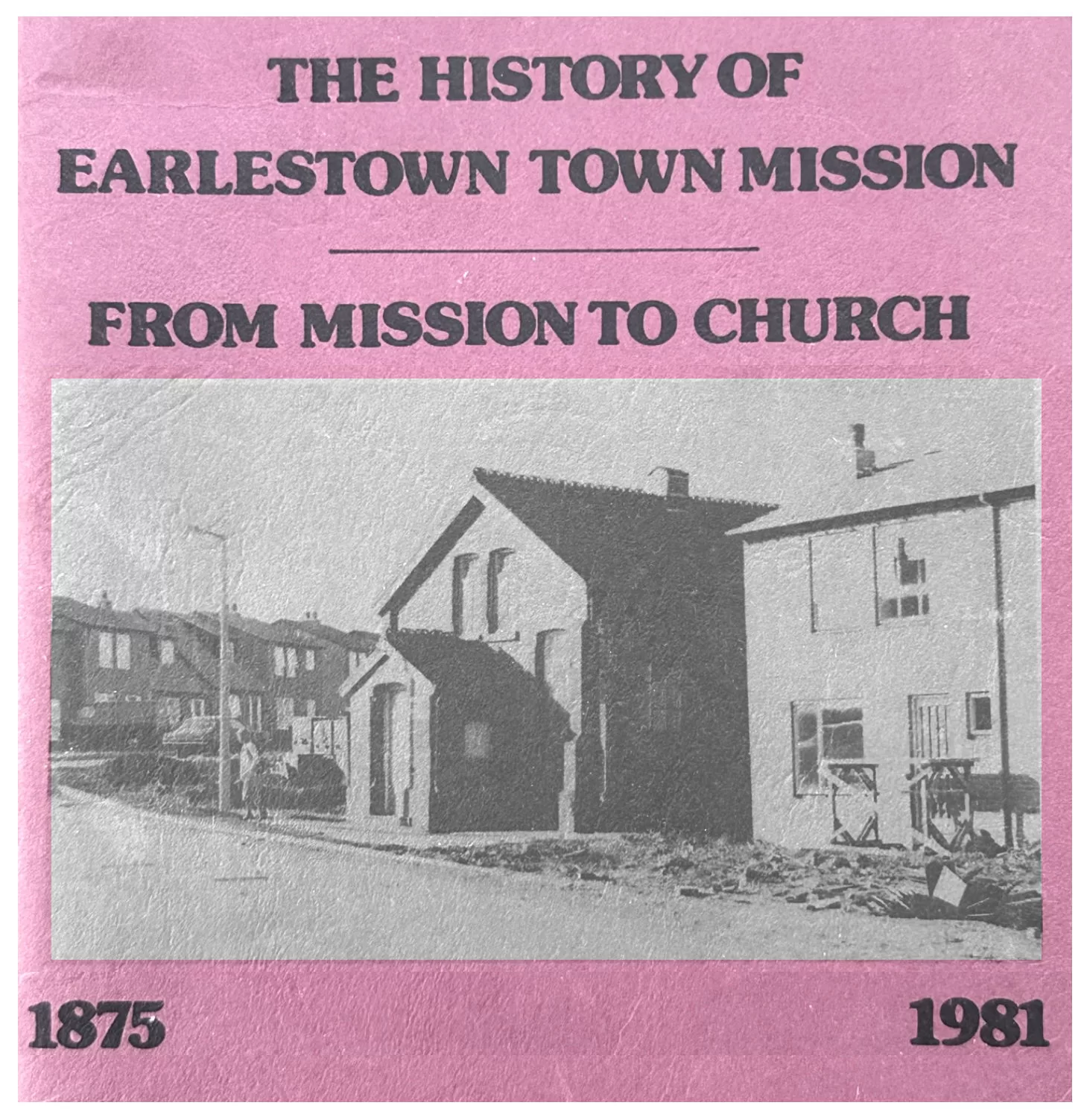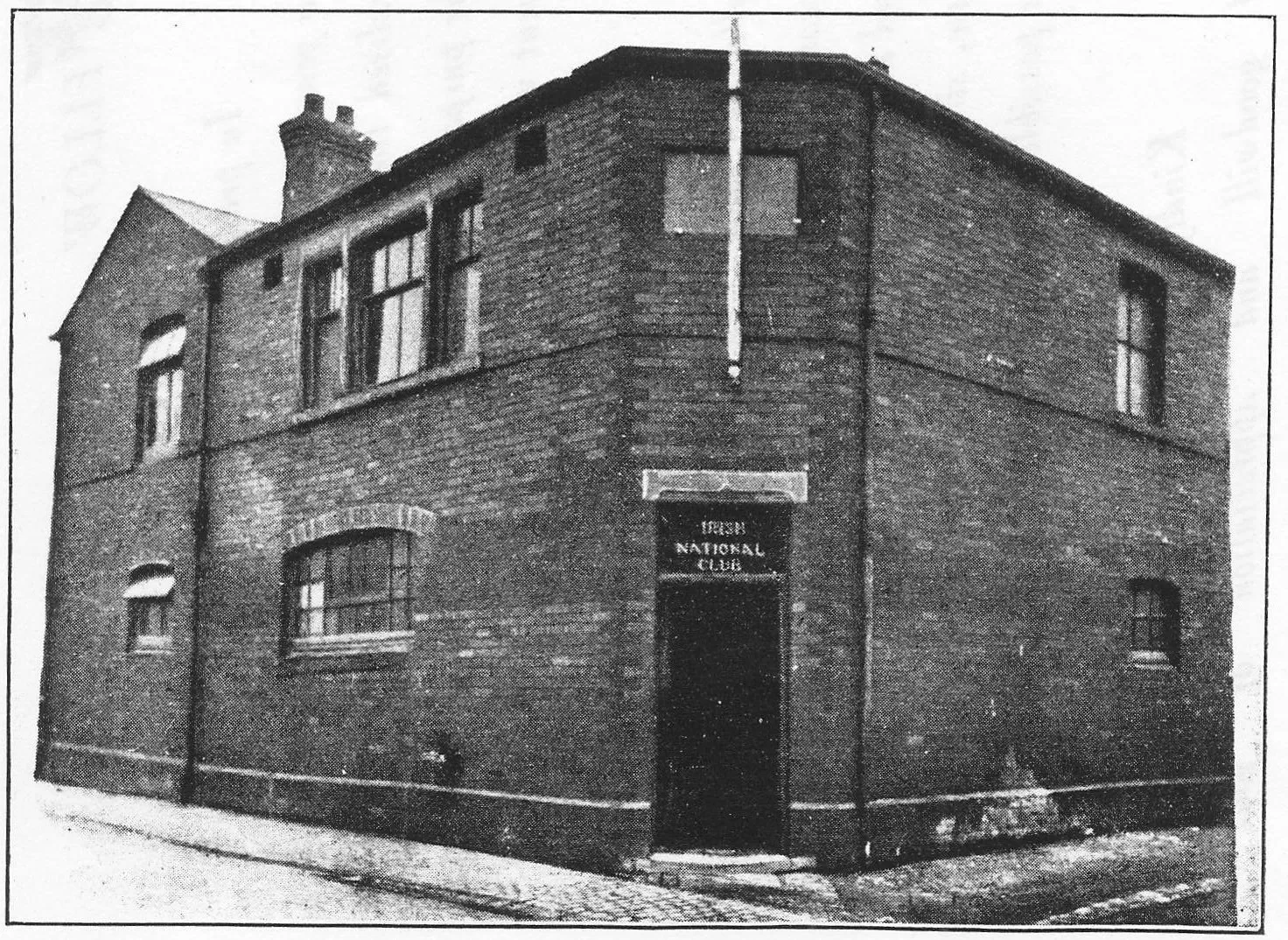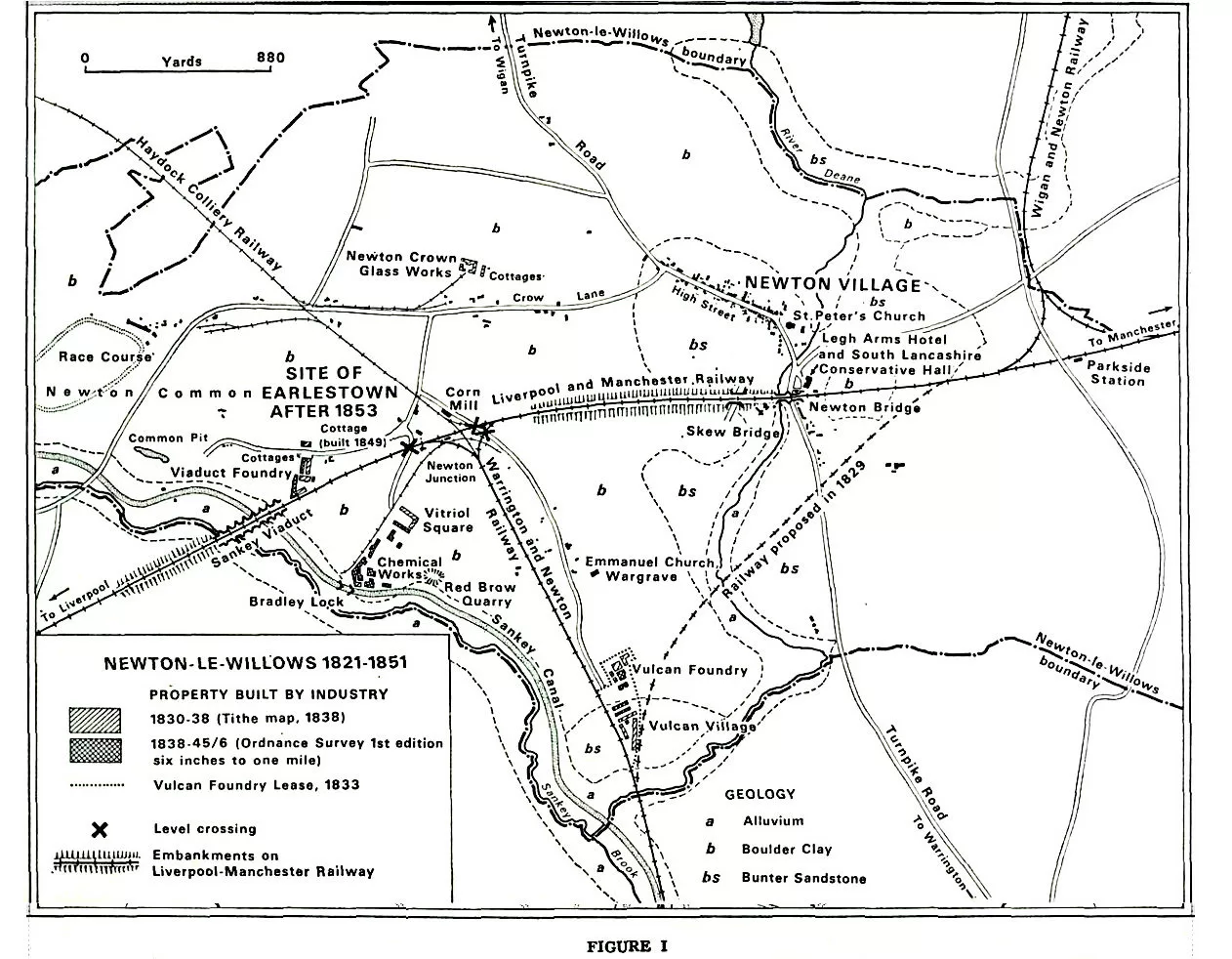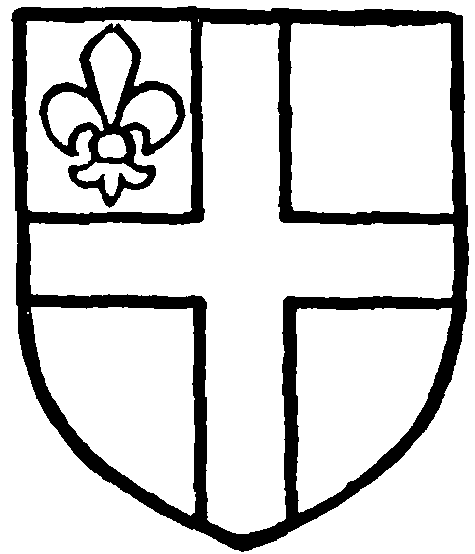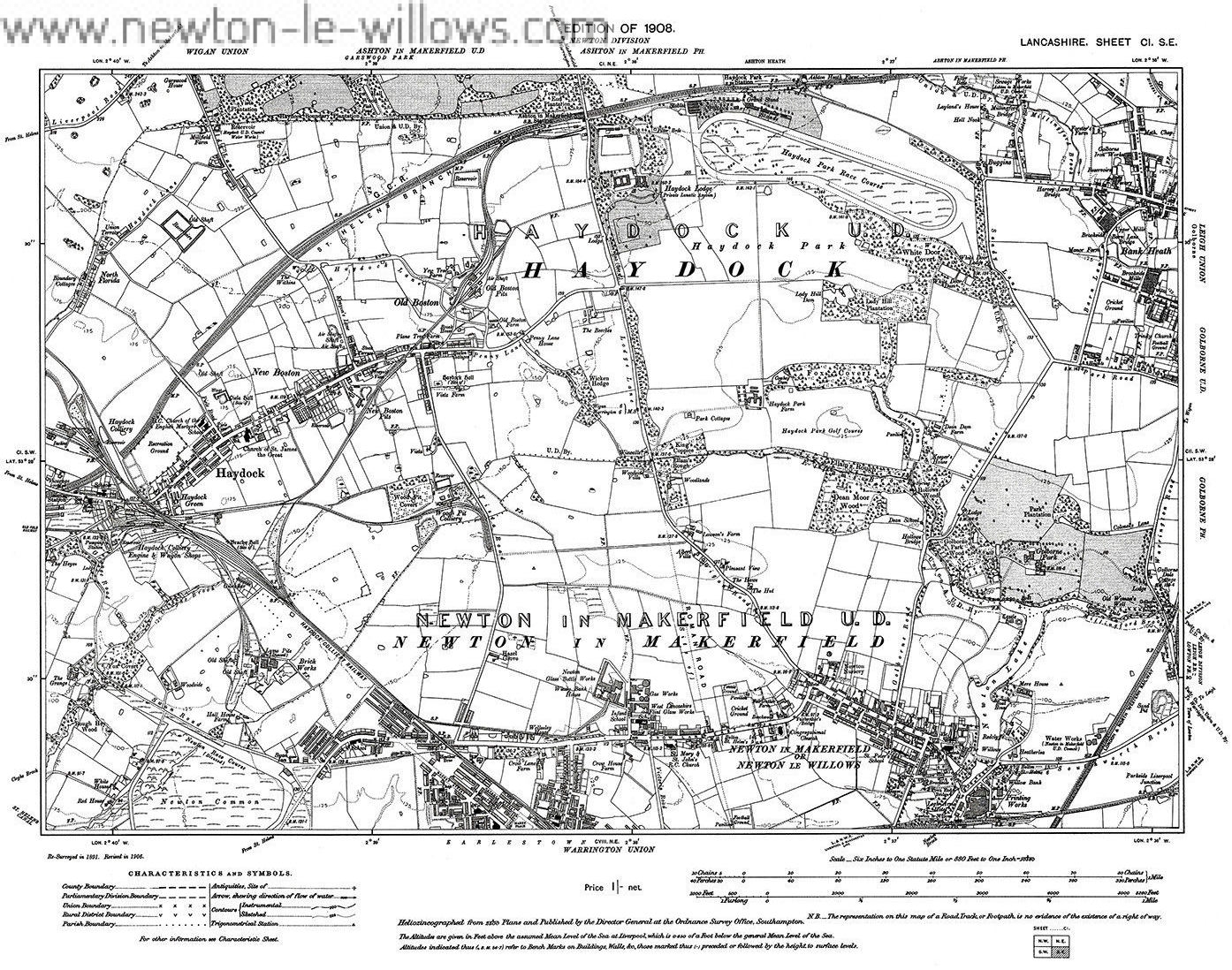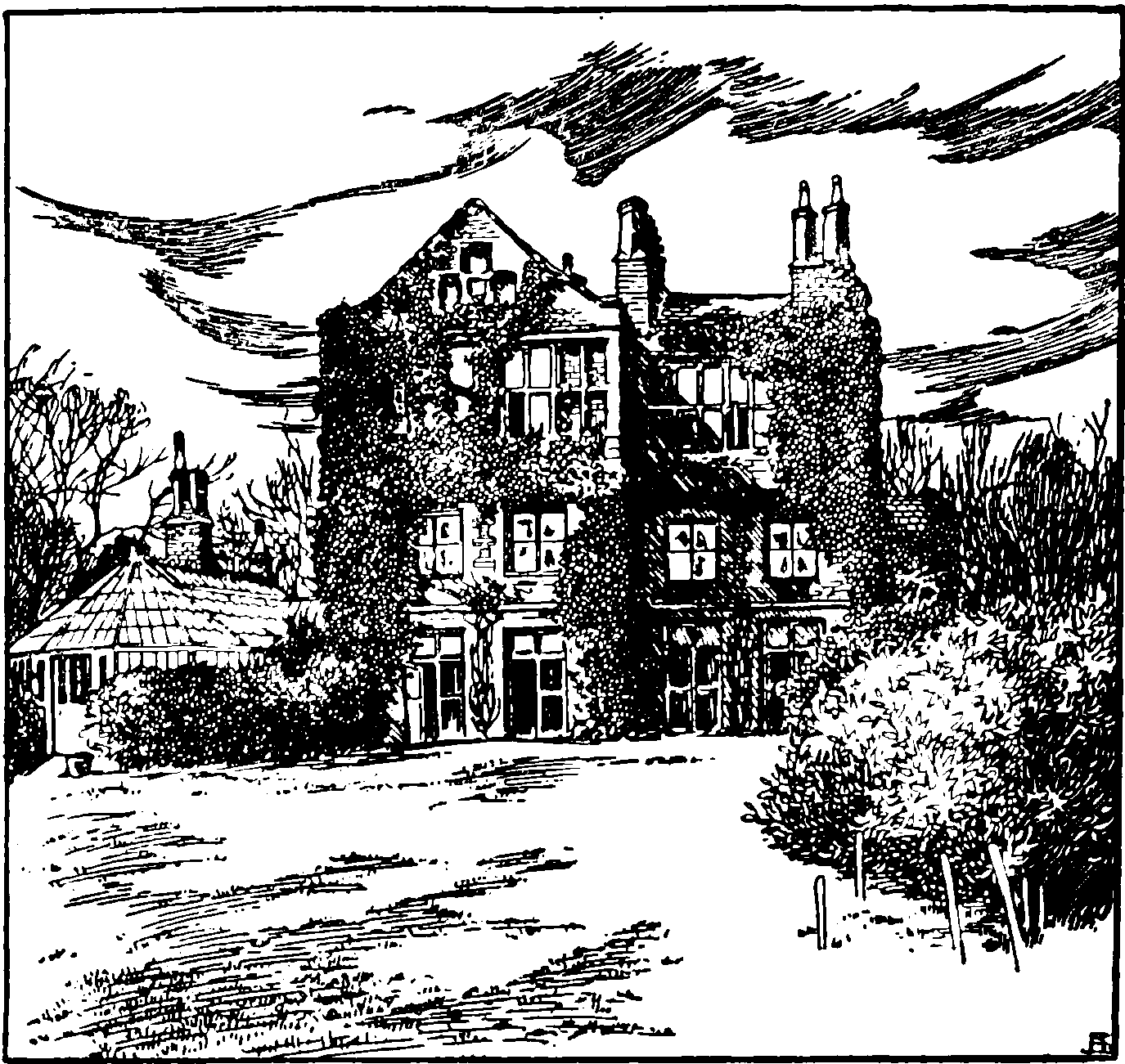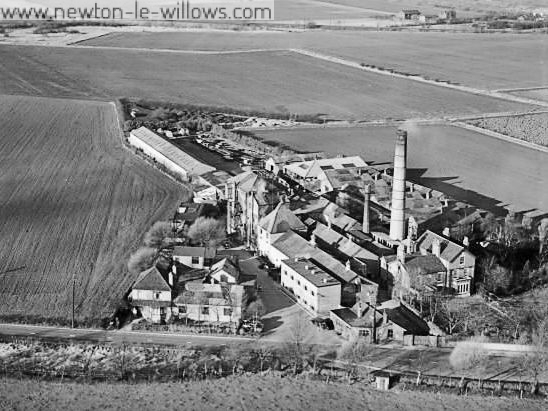His Majesty the King, etc, Duke of Lancaster “Your Majesty,” In all humility and loyalty, certain of your subjects in the district of Burtonwood have interested themselves in completing historical records of their village and environs and contact is being made in this manner with all whose family and ancestral relationships are in any way connected with the story of Burtonwood. It may interest your Majesty to peruse the following historical data which shows the relationship between the House of Lancaster and those who lived literally at the beginning of…
Read More >>Category: Local History
Burtonwood, a history
Transcribed with the help of Andrew Fackey from documents in Chester Archives The information has been taken from Royal Lancaster Forests. Leghs of Lyme by Lady Newton. Annals of Warrington by Beaumont. Copies of charters from Warrington Museum. Information of the Parish from books kept by the Vicars, now in Preston Records Office. Royal Forests of Lancashire.1102-1116. Whilst the honour was in the King’s hands Burtonwood, a dependent manor of Warrington was taken into the Forest even as late as the mid 14th century. The Dukes of Lancaster still claimed…
Read More >>Toll Road Improvements
Notice is hereby Given, this Tuesday 30 October 1787, That application is intended to be made to Parliament and a Petition presented at the next Session, for enlarging the Term and amending the Powers of an Act of Parliament, made and passed in the first Year of the Reign of his present Majesty, intitled, “An Act for repairing and widening the Roads from a certain Place near Bolton in the Moors to Leigh, and thence to the Guide Post near Golborne Dale, and to the South End of Newton Bridge,…
Read More >>1832: Murder at Burtonwood
LANCASTER SPRING ASSIZES. CROWN COURT, Friday, 13 March 1832. William Heaton, 27, was charged with the wilful murder of John Ratcliffe, at Burtonwood, on the night the 28th of October last. Dr Brown very minutely detailed the facts of the case, and called the following witnesses: James Andrews: I live at Burtonwood. On the morning of the of October last, as was going to my work, between five and six o’clock, with another man, we saw person lying dead. John Ratcliffe. had no hat on. There was a great quantity…
Read More >>Six Airmen killed and Eighteen Injured
Sunday 6th June 1952. A board of investigation will sit at the American airbase at Burtonwood, near Warrington, to-morrow to determine the cause of the crash on Saturday night between a Neptune naval patrol bomber and a Dakota aircraft in which six airmen were killed and eighteen injured. A seventh airman is missing, believed killed, and last night the wreckage of the burned-out planes was still being searched for his body. The eighteen injured are in the base hospital suffering from burns and shock and one of them is stated…
Read More >>The Last American
Once the biggest military base in Europe, Burtonwood is now a shadow of its former self. Lieutenant Colonel Bryan C. Lobdell has secured a place in the 50-year-old history of Burtonwood. This spans from the action-packed war years to today, a period marked by the absence of a clear enemy and American budget cuts that are accelerating its decline. Once, the place resonated with the landings and take-offs of great Flying Fortresses. Men worked in the hangars around the clock, seven days a week, fitting communications and armaments to the…
Read More >>Burtonwood: Historical Snippets by Year
I’ve been trying to put together a year by year snippet history of Burtonwood historical notes, it’s a work in progress, it has errors, and spelling mistakes, these will most likely get edits, names and place names will be edited and checked , I am sure it will have more year snippets added to it and many updates as more documents are read and transcribed by the people helping me 1028 King Canute in his excursion against the Scots boldly made the Norwood road and took measures of common ford…
Read More >>Winwick : It’s History and Antiquities
By WILLIAM BEAMONT. Second Edition, 1878 Time, that great clock which requires no winding up, and possesses what so many dreamers have sought for and sought in vain—the secret of perpetual motion—has also, like other clocks, from time to time, but at longer intervals, its striking times which summon attention and invite us to pause and look back, promising in return something which from the past shall teach the present how to improve the future, and instruct while it amuses us. CONTENTS. Part 1. Etymology of Winwick. Part 2. Oswald,…
Read More >>Earlestown’s Brunswick Road Mission
From Mission to Church The City Mission Movement: it was discovered that the poor would listen in great number’ provided they were not asked to enter a church” (Owen Chadwick, The Victoria Church, Part Il, P .286). Our Church has its origins in the City Mission Movement of the last Century. The Town Mission in Earlestown began in 1875 as an outreach from the Manchester City Mission. As the Industrial Revolution progressed, great cities, like Manchester, mushroomed with vast working populations overnight. The whole social structure of Britain was changed…
Read More >>The Irish Club, Earlestown, ’50 Years’ Golden Jubilee 1888-1939.
We go back fifty years. From the four Provinces beyond the sea have come exiles of Erin, settling in and around the district of Newton-in-Makerfield. They are not here of their own desire. They have been forced to leave their native land to earn a livelihood. Strangers in a strange land, they are God’s creatures, with the right to live. They are the poorest of the poor in this world’s goods, but in their poverty they are richly endowed with the spirit of faith, self-sacrifice, and affection, one towards another.…
Read More >>Newton-le-Willows 1821-1851
The impact of the Liverpool and Manchester Railway on: Newton-le-Willows 1821-1851 Newton le Willows is situated on the lowlands of south Lancashire, on the route to the north by way of Warrington, Wigan and Preston. From Saxon times until 1830 the village of Newton was in the east of the township, situated on an inlier of bunter sandstone overlooking a crossing place on the River Deane; this sandstone area provided a dry site and a water supply from shallow wells. The remainder of the township is a broad spread of…
Read More >>Haydock: A History of the County of Lancaster: Volume 4.
In history Haydock has been named as Hedoc, 1169; Heddoch, 1170; Haidoc, 1212. and then recently called Haydock This township has an area of 2,409 acres. (fn. 1) From its situation between Newton and Ashton it seems to have been cut off from the former township. Clipsley Brook separates it from Garswood in Ashton, and Sankey Brook forms the south-west boundary. The population in 1901 numbered 8,575. Haydock is varied in its natural features, sometimes undulating, sometimes flat. On the west the surroundings are unpicturesque but typical of a colliery country, scattered over…
Read More >>Haydock: some history
Haydock Historic Characterisation project from 2011 conducted by National Museums Liverpool and English Heritage Township: Haydock Geology: The solid geology is coal measures sandstone overlain by drift deposits of boulder clay. Historic Core: According to the OS 6 1st Edition map, the main historic core of Haydock appears to have been based at Haydock Town and Old Boston. Linear settlement development also exisits between Haydock Green and Old Boston. Haydock Green is named and depicted on Greenwood(1818) and Hennet (1830) maps. Only the township of Haydock is named on Hennet…
Read More >>A History of Burtonwood.
Burtoneswod, 1228; Bourtonewod, 1251; Burtonwode, 1297; Bortounwod, 1337. This township, of 4,192½ statute acres, (1) was long purely agricultural in character. The population has recently increased at a rapid rate, and in 1901 numbered 2,187 persons. The country is extremely flat, with much reclaimed marsh or mossland, drained by ‘cuts’ into the Sankey Brook, which, winding from north to south-east and south, forms the boundary of the township on those sides. It yields crops of wheat, clover, and hay, and some potatoes and turnips on a clay soil; but on…
Read More >>History of Burtonwood Brewery
On March 13th, 1867, James and Jane Forshaw purchased the land on which the Burtonwood Brewery now stands. James had some brewing training while employed at the Bath Springs Brewery, Ormskirk, and probably chose the site because of its position mid-way between Warrington and St Helens, and also because there was an adequate supply of suitable water readily available. The first brewery had a 14-barrel open-tired copper, two 12-barrel Fer-menting Vessels and a cellar capacity for 45 barrels. The trade was with Free Houses, farmers and private landowners, mainly in…
Read More >>

